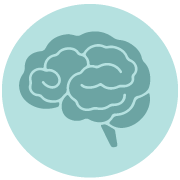 What is a Stroke? | Ischaemic, Haemorrhagic and TIAs
What is a Stroke? | Ischaemic, Haemorrhagic and TIAs
The most common form of a Stroke is the result of a sudden disruption of the flow of blood to parts of the brain.
When blood cannot reach parts of the brain, the oxygen supply to those areas is cut off and the brain cells die (infarct).
Less frequently, blood vessels burst and blood spreads into nearby brain areas (haemorrhage). The result of these processes is a Stroke.
Functions normally controlled by these damaged brain areas are affected. In many cases, unconsciousness and/or partial paralysis may occur. This is often the immediate outward sign that a Stroke has occurred.
There are two different types of Stroke:
- Ischaemic Stroke; and
- Haemorrhagic Stroke.
Ischaemic Stroke
In everyday life, blood clotting is beneficial. When you are bleeding from a wound, blood clots work to slow and eventually stop the bleeding. In the case of Stroke, however, clots are dangerous because they can block arteries and cut off blood flow. Ischaemic Stroke is the most common type of Stroke (80% – 85% of Strokes are ischaemic). An Ischaemic Stroke is caused when a clot blocks or ‘plugs’ a blood vessel in the brain. There are two ways that a clot Stroke can occur:
- An embolic Stroke occurs when a blood clot forms somewhere in the body and travels through the blood stream to the brain.
- A thrombotic Stroke occurs when blood vessels narrow as a result of blood fat, cholesterol or calcium, which grow to completely block the blood vessel.
Haemorrhagic Stroke
A haemorrhagic Stroke is caused when a blood vessel in the brain breaks or ‘erupts’. There are two types of Haemorrhagic Stroke – a subarachnoid haemorrhage and an intracerebral haemorrhage.
- An intracerebral haemorrhage, which is the more common form, involves bleeding within the brain tissue itself.
- With a subarachnoid haemorrhage bleeding occurs in the space around the brain. Often this is due to an aneurysm – a weak or thin spot on a blood vessel wall.
Transient Ischaemic Attack (TIA)
Sometimes called a mini Stroke, a TIA has similar symptoms to a Stroke but the person appears to recover very quickly. The medical definition for TIA is:
- Transient – Symptoms disappear in less than one day (24 hours);
- Ischaemic – Failure of blood flow to part of the brain or eye; and
- Attack – Sudden onset of symptoms that may vary from person to person, depending on which part of the brain or eye is starved of blood.
What is a Transient Ischaemic Attack?
TIA symptoms depend on which blood vessel to the brain is blocked and so which part of the brain is starved of blood. Common symptoms include:
- brief attacks of weakness;
- clumsiness;
- numbness or pins and needles of the face, arm or leg on one side of the body;
- slurring of speech or difficulty in finding words; or
- blurred vision in one or both eyes.
TIAs do not usually cause “blackout” fainting or loss of consciousness.
Is a diagnosis important?
There are several illnesses which may give very similar symptoms to those of a TIA and require different treatments. These include:
- migraine;
- epileptic fits or a seizure;
- a low blood sugar level;
- fainting and changes in the heart rhythm.
So it is important that people with any of the TIA symptoms should go to see their doctor to find out whether they have had a TIA or some other kind of attack.
Why is a TIA important?
A person who has had a TIA has an increased risk of having a Stroke. The risk of having a Stroke in the first year after a TIA is about 10% but then falls by about 5% each year.
What treatment is available?
The treatment depends on the results of a careful assessment by the doctor and includes:
- Anybody who smokes should stop completely.
- People with high blood pressure, high cholesterol or high sugar levels in the blood can usually be helped by a healthier diet, though drugs are sometimes needed.
- A doctor may also prescribe aspirin to thin the blood: this reduces the risk of having a Stroke after a TIA.
- Sometimes TIAs are due to narrowing of a blood vessel in the neck; this can be treated by an operation called a carotid endarterectomy.
Recognising a Stroke
BE FAST (Balance, Eyesight, Face, Arm, Speech, TIME)
B – Balance loss – Is the person suddenly having trouble with balance or coordination?
E – Eyesight changes – Is the person experiencing sudden blurred or double vision or a sudden loss of vision in one or both eyes without pain.
F – Face drooping – Does one side of the face droop or is it numb? Ask the person to smile.
A – Arm weakness – Is one arm weak or numb? Ask the person to raise both arms. Does one arm drift downward?
S – Speech difficulty – Is speech slurred, are they unable to speak, or are they hard to understand? Ask the person to repeat a simple sentence like, “The sky is blue”.
T – Time to call 000 If the person shows any of these symptoms, even if the symptoms go away, call 000 and get them to hospital immediately.
